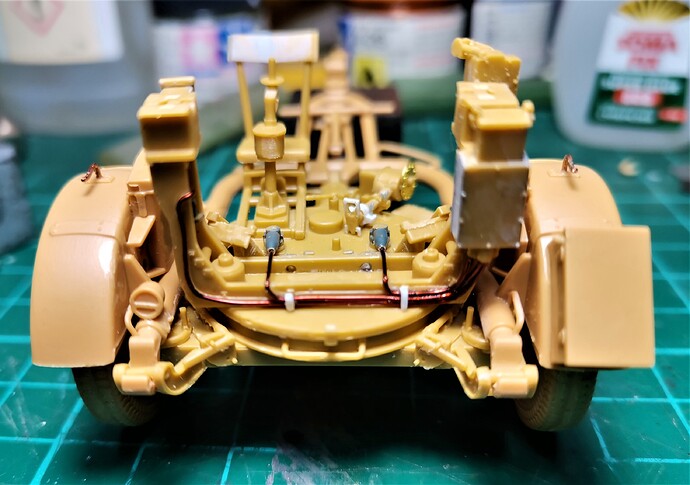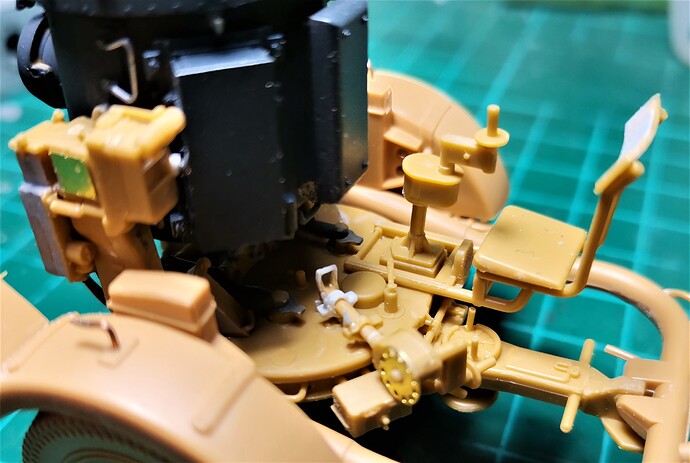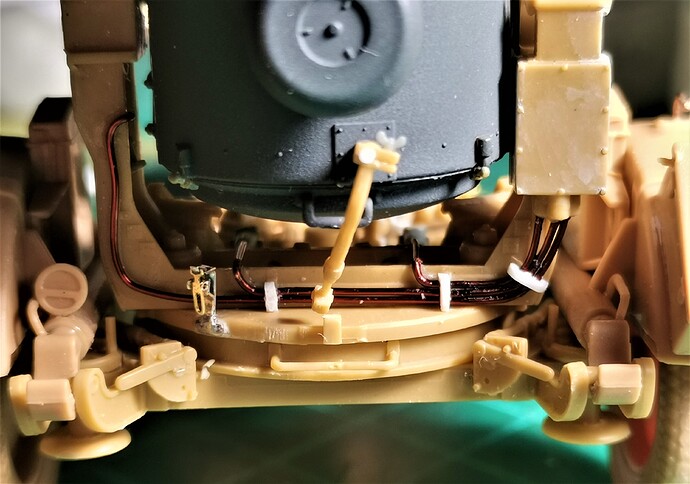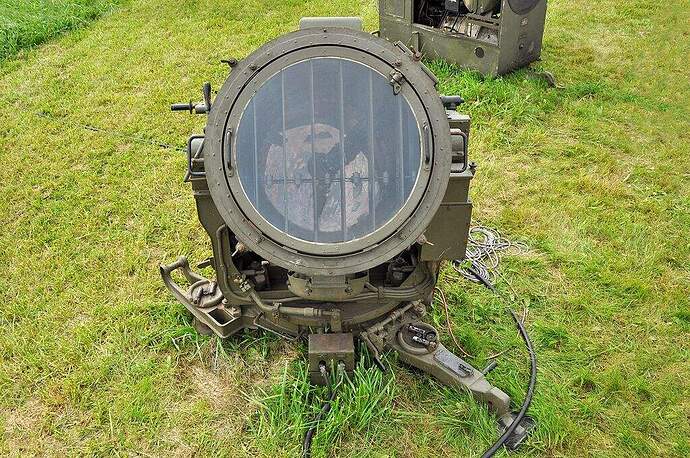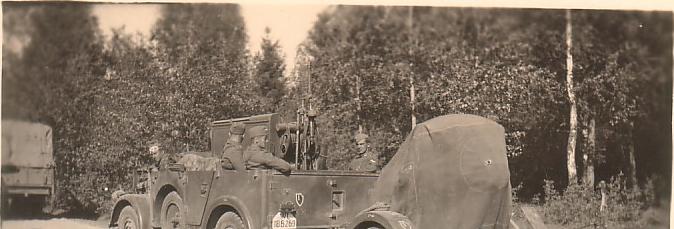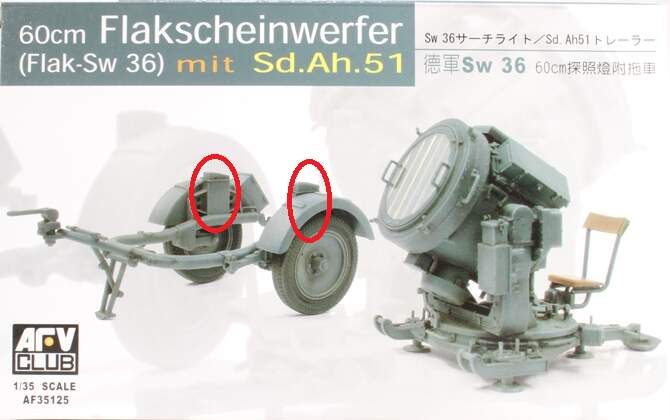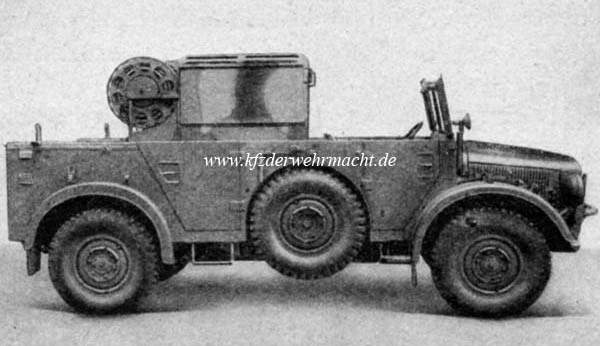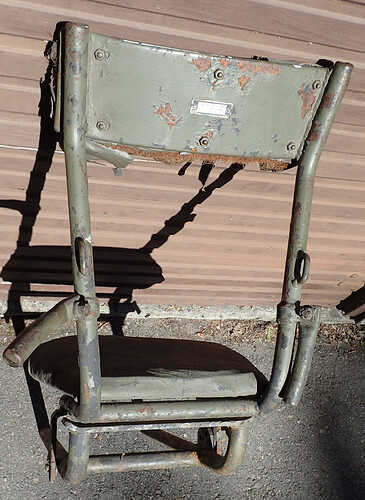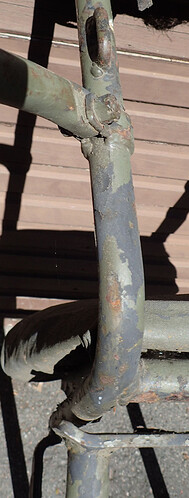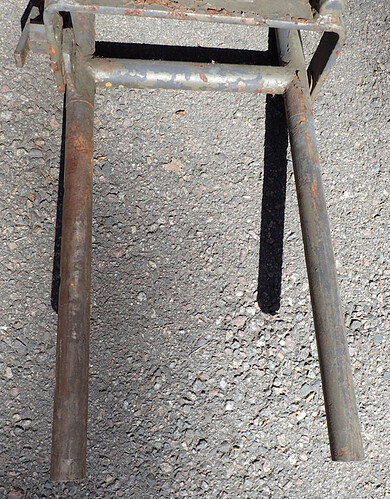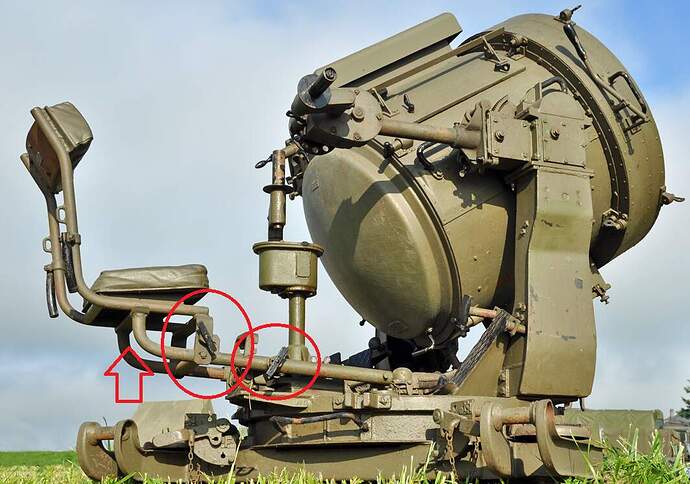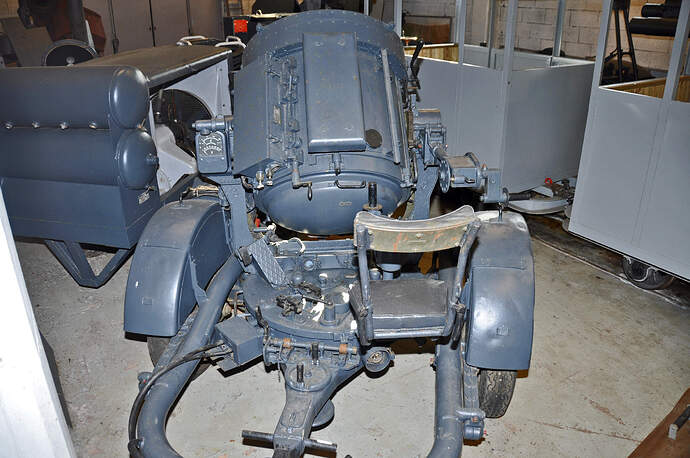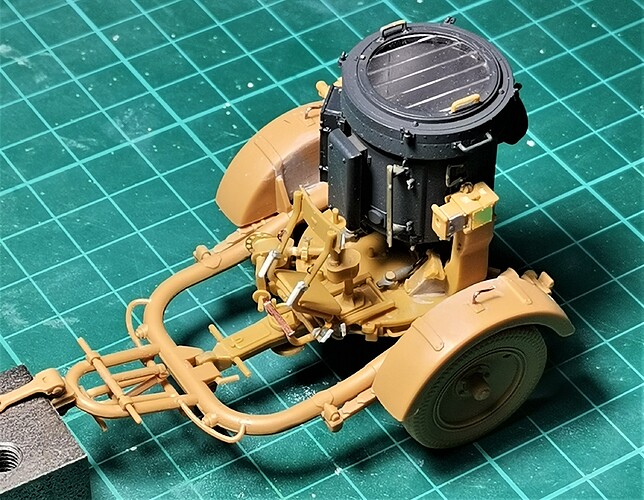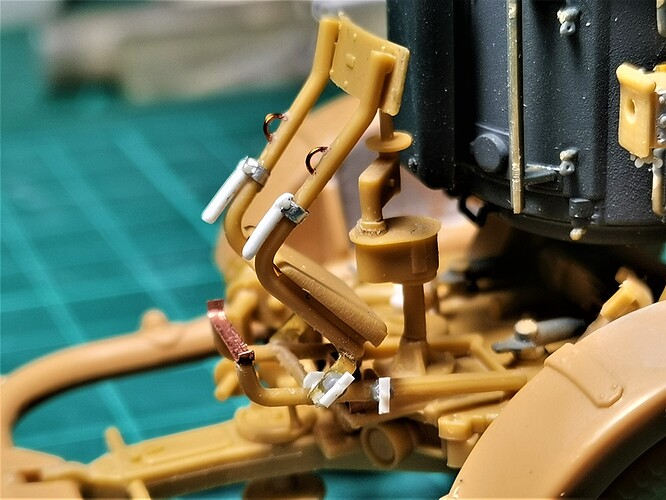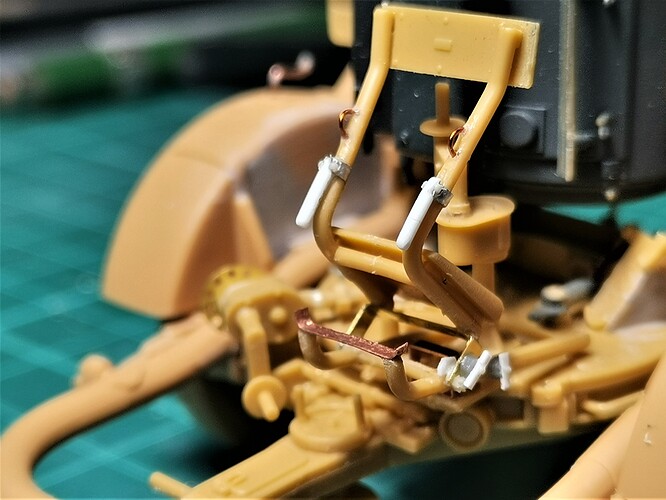My away-from-home-build for almost an year.
Have been working on it on and off, when away for some reason(4 small size sprues leaving a lot of space for tools and glue in the sturdy box of Plusmodel’s Pavesi P.100).
The kit is a small gem, typical for AFV Club, with lots of tiny- and I mean really tiny- and tiniest parts.Funny thing is- I did not loose a single from the tiny or tiniest parts, messed up only with medium sized ones…
First I built the Flak Sw 36 OOB:
Had to make replacement for a clamp, I lost in a hotel room in Plovdiv:
Coming home I decided I need to pay more attention to this build and started looking for refferencies. Found a great vid on YT:
Wonderful restoration job by these gentlemen and very informative.
I was able to pick and add some details like wiring:
Missing rivets, divider between amper- and voltmeter on instrument panel and rope hooks on both fenders:
Further search led to the discovery of how the Flak Sw. 36 looked like in transport mode:
I was especially curious what the 2 clamps, mounted on the frame were designed to hold. Pictures from the splendid ASPMH museum in La Wantzenau/France gave me the answer:
http://www.asphm.com/vehicules/flak_sw_36_sd_ah_51_stromaggregat/flak_sw_36_sd_ah_51_stromaggregat.html
Vertical elevation gear was dismantled, cut, trimmed and after adding some minor detail the gear shaft was run through the clamps and the entire elevation gear was glued together again:
The rigid strut that fixed the projector to the frame in transport mode also underwent some modifications. A clamp was soldered and added to the frame, it holds the strut when stowed:
I need to finish the strut and reduce the height of the butterfly nuts on both clamps holding the vertical elevation gear.
And decide whether I build a German, or a Bulgarian Flakscheinwerfer.
So far my search for the vehicle type used to tow the projector in Royal Bulgarian Army has been futile.
I intend to build the generator for Flak Sw.36 too.
More to come soon,
Cheers,
Angel



